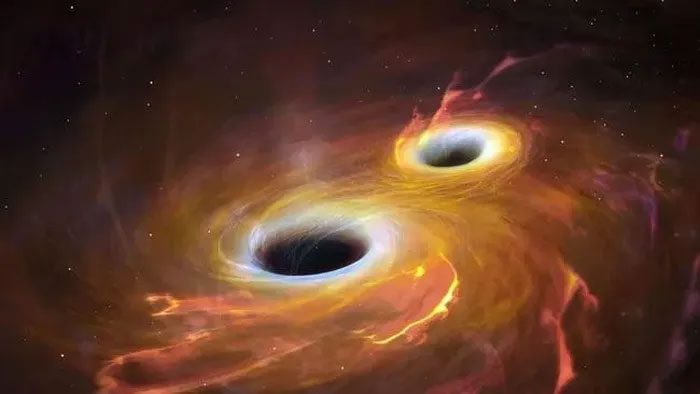Astronomers have discovered two active black holes merging at the farthest distance ever observed, approximately 900 million years after the Big Bang. This marks the first time that two glowing supermassive black holes have been detected during the dawn of the universe.
The cosmic dawn refers to the first billion years of the universe. During this period, around 400 million years after the Big Bang, the Reionization Era began, during which light from newly formed stars stripped hydrogen from their electrons, leading to a fundamental reshaping of galactic structures.

Illustration of two merging black holes. (Photo: Mark Garlic/Science Photo Library).
“The existence of merging quasars during the Reionization Era has been predicted for a long time. Now, for the first time, it has been confirmed,” said Yoshiki Matsuoka, the lead author of the study and an astronomer at Ehime University in Japan.
Black holes are formed from the collapse of massive stars and grow by continuously absorbing gas, dust, stars, and other black holes in their star-forming galaxies. If they grow large enough, the friction will cause matter spiraling into the black hole to heat up and emit light thousands of times brighter than the brightest stars.
Previous simulations of the cosmic dawn suggested that swirling clouds of cold gas may have coalesced into massive stars that would quickly collapse, creating black holes. As the universe expanded, the first black holes might have rapidly merged with other black holes, resulting in even larger supermassive black holes throughout the universe.
The researchers found these quasar pairs using the Hyper Suprime-Cam on the Subaru Telescope, where they appeared as two faint red streaks against a sparkling backdrop of galaxies and stars.
Subsequently, astronomers took spectroscopic images to confirm that the light source was a pair of spiraling quasars.
The researchers noted that this discovery will enhance our understanding of the powerful light emitted by quasars that contributed to the structure of the universe as we see it today.


















































